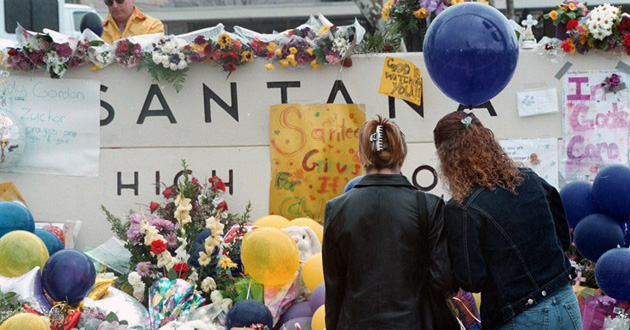Grace at work — even in tragedy

When the National Desk of The New York Times called me several years ago and asked if I could hurry to a high school in San Diego that had experienced a shooting, my heart sank.
One reason my heart sank was that the shootings at Columbine High School in Colorado had occurred just two years before, and I thought, “Here we go again. Why does this keep happening?”
The second reason was that, as a parent, I thought of my own kids who were in San Diego schools at the time, and news of yet another shooting made me fearful for them.
The third was that, as a member of the news media, I knew that the coverage had the potential for sensationalizing, demonizing and creating a media circus. Stories like this are so senseless and tragic that I approach them with a certain amount of dread.
Still, I thought it was important that I cover it because I thought perhaps I could provide understanding for something that seemed so unexplainable and painful.
I got to the school, where workers from several emergency vehicles were still sorting things out. Hundreds of students milled around, waiting for parents whose primal instincts had been triggered. Two people had been killed and 13 were wounded in the shooting before the student with the gun was stopped. I approached two girls, identified myself as a reporter and asked if I could ask them a few questions.
One knew the shooter well. They both had seen the bodies in the hallway. It was a terrifying sight for them, yet, through their tears, they wanted to talk about it.
As I wrote down their comments in my notebook, a small group of reporters gathered. Television cameras zoomed in. Other reporters asked questions. It didn’t get out of control, but it was pretty intense.
While this was going on, I felt a hand on my shoulder. Usually when that happens to me in a crowd of journalists, it is a photographer asking me to move to one side or another for a better picture. Without turning around, I leaned a little to my left to accommodate what I presumed to be a colleague.
The hand remained.
So I moved a little to the right. Still no change. It didn’t put pressure on me. It wasn’t trying to get me to move. It just stayed there, and I let it remain while I did my work.
When I was done talking to the girls, I thanked them, and the other reporters moved on. I turned around to see who was behind me. It was my neighbor, from another part of the city, whose kids are in school with my kids. He works with Young Life and had come to the school to help with ministry after the attack. But he saw me, and decided to come along on my task and pray for me as I talked to witnesses of the shooting.
I saw his actions as God saying, “I got here before you. I am in the middle of this whole, terrible situation. I am here for the victims, the families, the shooter, the emergency workers, and the reporters. Even in the senseless events, where there seems to be nothing good, I am here.”
The activity of God was present—and thorough—expressed with a hand on a shoulder.
Eugene Peterson said, “Long before I arrive on the scene, the Spirit is at work. I must fit into what is going on.”
Jesus drives home this point with the story he tells about a judge who had little regard for God or people. In his city was a widow who kept coming to the judge, saying, “Grant me justice against my opponent.” He refused at first, but was worn down by the woman, so he finally granted her justice. It’s a story about how we are constantly confronted by grace—grace that pursues, invades, initiates. We are the judge in this story, and grace continuously approaches us, like the insistent woman, demanding that we do it justice by seeing it. It is grace that both pursues and precedes, and it bends us toward God.
When we’re paying attention, we see that grace is breaking into our everyday moments—even the terrible ones—making them different, making them sacred, drawing us into the presence of God.
That hand on my shoulder wasn’t anyone saying, “You’re in my way.” It was God saying, “I am on your way. See me everywhere.”
Let’s do grace justice.
— by Dean Nelson
Dean Nelson directs the journalism program at Point Loma Nazarene University in San Diego. His book on seeing God in everyday life is God Hides in Plain Sight: How to See the Sacred in a Chaotic World.





